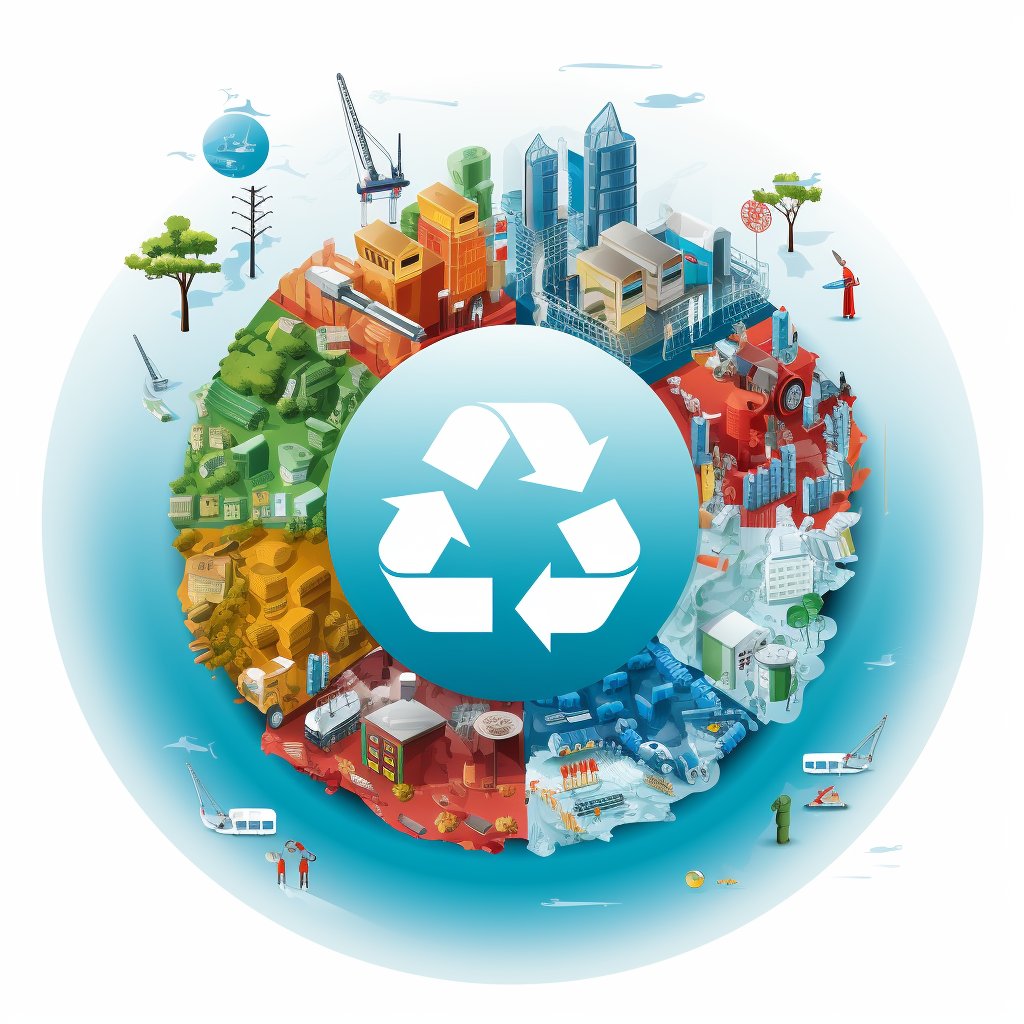Recycling has become an increasingly important topic for individuals, companies, and governments worldwide in recent years. Recycling credits are one way that industries can incentivise recycling and promote sustainable practices.
Recycling has become an increasingly important tool for addressing our planet’s environmental challenges. Recycling can help conserve natural resources and protect the ecosystem by reducing waste and pollution. A growing number of companies and organisations are turning to recycling credits. These credits provide a financial incentive for recycling specific waste materials and can be traded on the market.

Understanding Recycling Credits
Recycling credits are tradable certificates representing a certain amount of recycling effort or achievement. They are typically awarded to companies or organisations that recycle a certain amount of waste, reduce carbon emissions, or take other sustainable actions. These credits can be traded or sold on exchanges, allowing companies to offset their environmental impact by purchasing credits from others.
Different Types of Recycling Credits
There are several types of recycling credits available, each with its specific focus and application. Some common types of recycling credits include:
- Carbon Credits: These are credits awarded to companies that reduce their greenhouse gas emissions by implementing renewable energy sources or improving energy efficiency.
- Plastic Credits: These are credits awarded to companies that recycle plastic waste, reducing the amount of plastic that ends up in landfills or the ocean.
- Paper Credits: These are credits awarded to companies that recycle paper waste, reducing the amount of trees cut down for paper production.
- E-Waste Credits: These are credits awarded to companies that recycle electronic waste, reducing the number of toxic materials that end up in landfills or the environment.
Application Areas
Recycling credits can be applied in a variety of industries, including:
- Plastics Industry: Plastic is one of the most significant users of recycling credits, as plastic waste is a major environmental concern. Companies that recycle plastic waste can earn plastic credits, which can be sold to companies looking to offset their own plastic waste.
- Recycling Industry: The recycling industry can also earn recycling credits, as it is critical in reducing waste and promoting sustainability.
- Consumer Products: Companies that produce consumer products can also earn recycling credits by using recycled materials in their products or packaging.
Consumer Product Examples
Many consumer products are made with recycled materials, including:
- Recycled Paper Products: Products like toilet paper, tissues, and paper towels can all be made with recycled paper.
- Recycled Plastic Products: Products like water bottles, clothing, and furniture can all be made with recycled plastic.
- Recycled Glass Products: Products like glass bottles and jars can be made with recycled glass.
Material Properties
Recycled materials can have different properties than their non-recycled counterparts. For example, recycled paper may not be as strong as non-recycled paper, while recycled plastic may be less durable than non-recycled plastic. However, many companies are finding ways to improve the properties of recycled materials through new technologies and processes.
Future Trends
The recycling industry is constantly evolving, with new technologies and processes always emerging. Some trends to watch in the future include:
- Increased Use of Technology: Technology will play an increasingly important role in the recycling industry, with innovations like AI and machine learning helping to improve efficiency and reduce waste.
- Greater Focus on Circular Economy: The circular economy model, which prioritieses the reuse and recycling of materials, will become more prevalent in the future.
- Increased Collaboration: Companies and governments will need to work together more closely to promote recycling and sustainable practices, including the use of recycling credits.
Market Price Developments
The market price of recycling credits can fluctuate based on supply and demand. As more companies adopt sustainable practices and demand for credits increases, the price can rise. Conversely, if a surplus of credits is available, the price may decrease.
The market price of recycling credits has increased in recent years, reflecting the growing demand for sustainable practices. For example, the price of carbon credits has increased significantly as companies look for ways to reduce their carbon footprint.
Global Impact
The impact of recycling credits can be felt globally, as they incentivise sustainable practices and help reduce waste and pollution. Recycling credits have become increasingly important in the fight against climate change, as they encourage companies to reduce their greenhouse gas emissions and adopt sustainable practices.
The impact of recycling credits can also be seen in reducing waste in landfills and the oceans. For example, plastic credits incentivise companies to recycle plastic waste, reducing the amount of plastic in landfills or the sea.
Future Market Prognosis
The future of the recycling credits market looks promising as more companies and governments adopt sustainable practices and demand for credits increases. The market is expected to continue to grow, with new types of credits emerging and an increasing focus on the circular economy.
Some experts predict that the market for recycling credits could reach $10 billion by 2025, driven by growing demand from companies and the increasing importance of sustainability in business practices.
However, challenges remain, such as the need for more standardisation and regulation in the market, which can make it difficult to accurately price and trade credits. As the market for recycling credits continues to evolve, it will be important to address these challenges and ensure that the market remains transparent and efficient.
Environmental Benefits
The primary environmental benefit of recycling credits is reducing waste and pollution. By incentivising companies to recycle and reduce their environmental impact, these credits help mitigate the adverse effects of waste on the environment.
For example, plastic credits incentivise plastic waste recycling, reducing the amount of plastic in landfills or the ocean. Carbon credits incentivise the reduction of greenhouse gas emissions, helping to combat climate change.
Economic Benefits
Recycling credits also have economic benefits. By incentivising sustainable practices, these credits can reduce the costs associated with waste disposal and pollution. In addition, they can create new revenue streams for companies involved in recycling.
For example, companies can earn plastic credits by recycling plastic waste and selling the credits to other companies who need to offset their plastic usage. This creates a market for recycled plastic, increasing the value of plastic waste and creating economic opportunities for recycling companies.
Global Usage
The usage of recycling credits varies by region, with different countries and regions adopting different types of credits based on their specific needs and priorities.
In Europe, the European Union Emissions Trading System (EU ETS) is a significant carbon credit program that covers more than 11,000 power plants and industrial facilities. The system allows companies to trade emissions allowances, incentivising the reduction of greenhouse gas emissions.
In the United States, the California Carbon Offset Program is a market-based system that incentivises the reduction of greenhouse gas emissions. The program allows companies to earn credits for projects that reduce emissions, which can be sold to other companies to offset their own emissions.
In Asia, countries such as China and India have implemented plastic credit programs to incentivise plastic waste recycling. In China, the Plastic Waste Reduction and Recycling Credit Program was launched in 2018, allowing companies to earn credits for recycling plastic waste.
Recycling credits
Recycling credits are an essential tool for promoting sustainability and incentivising recycling efforts. With a range of applications across different industries and an increasing focus on the circular economy and technology, the future of recycling credits looks promising. By working together, companies and governments can continue to promote recycling and create a more sustainable future for us all.
Recycling credits have become essential for promoting sustainability and reducing waste and pollution. By providing a financial incentive for recycling specific waste materials, credits can help create new revenue streams, reduce waste and corruption, and contribute to efforts to protect the environment and mitigate climate change. While there are challenges and potential drawbacks to implementing a recycling credit program, the benefits can be significant for companies and organisations looking to reduce their environmental impact and promote sustainable practices. As the field of recycling credits continues to evolve, it is essential to stay up-to-date on the latest trends and best practices to maximise the benefits of this innovative approach to waste reduction and environmental protection.






